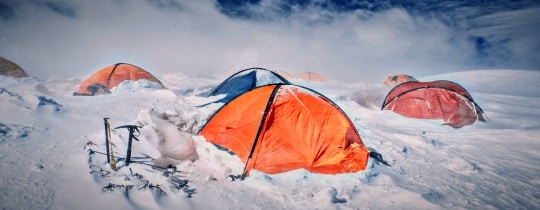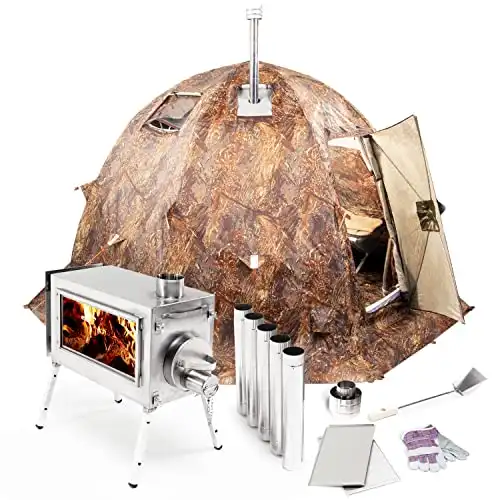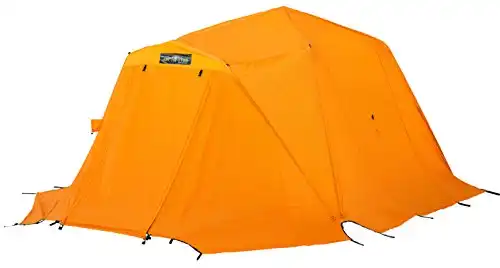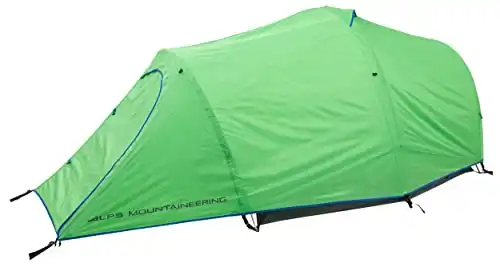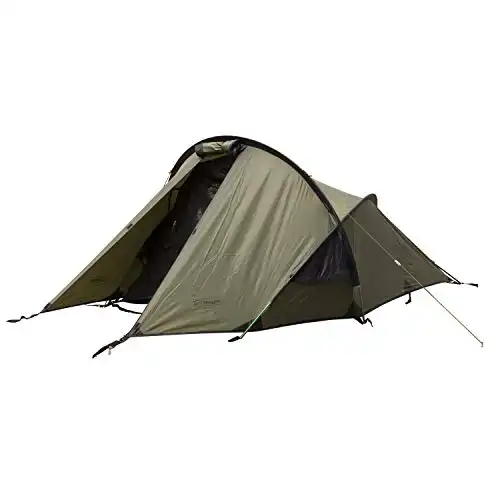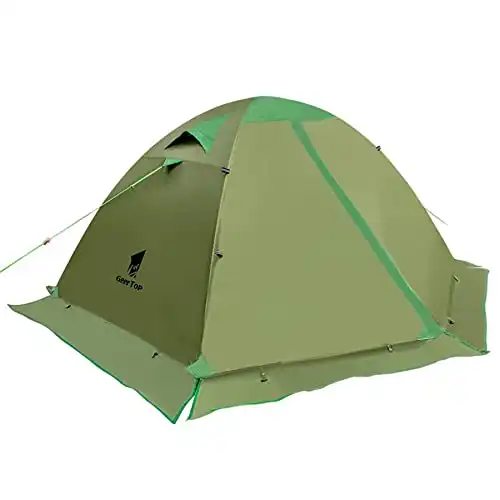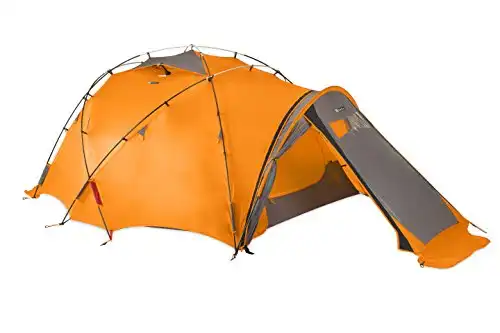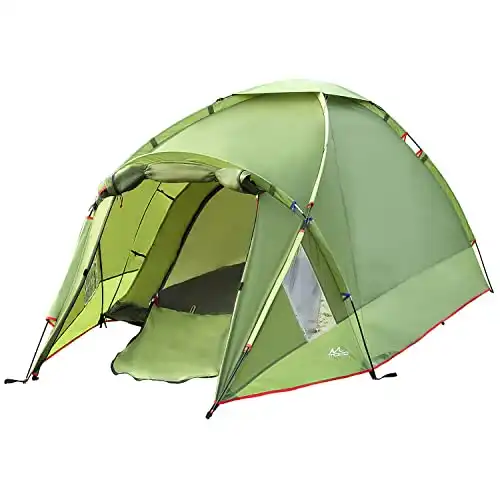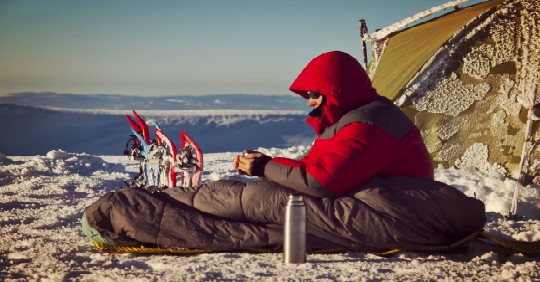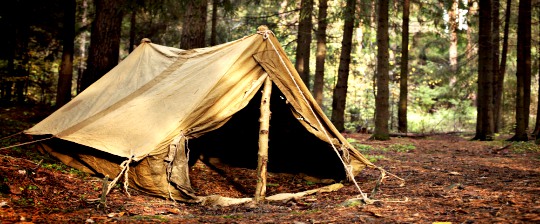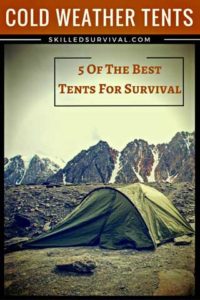
A Complete Guide To Sizing, Buying, & Utilizing Cold Weather Tents
Because when winter comes along, camping changes for the colder.
And sleeping outside becomes more dangerous for every inch of snow.
That’s why winter camping requires special gear.
But special gear is not cheap, and you must learn what to look for to get the BEST one for you…
TOPICS IN THIS GUIDE… ↓(click to jump)
- The Best Cold Weather Tents
- Choosing The Right-Sized Tent
- A Brief History Of Tents
- Makeshift Winter Survival Shelters
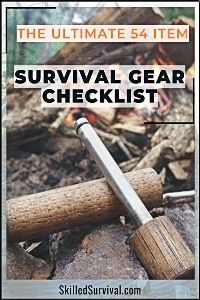
Want a free 54 item survival gear checklist?
Click here to instantly download this Complete Checklist PDF. No purchase necessary.Best Cold Weather Tents On The Market Today
Four-season tents come in all shapes and sizes to accommodate anyone, regardless of budget or circumstance.
The variety is vast.
With so many choices, things get overwhelming.
That’s why I compiled the following list of excellent 4-season tents.
Tents that will keep your butt cozy in the coldest temperatures imaginable.
Some are high-tech, and a few are more basic, but all serve the same general purpose: warmth and shelter.
Crafted with the highest quality materials, the RBM Outdoors Hot Tent boasts exceptional durability and uses a double wall design to withstand even the harshest environments.
The tent's robust construction features a stove jack, allowing you to safely use a wood-burning stove, ensuring warmth and comfort during chilly winter nights.
Whether deep in the wilderness or mountain camping, this hot tent keeps you cozy, even in sub-zero temperatures.
This all-season tent offers excellent ventilation, preventing condensation build-up and ensuring fresh air circulation.
The tent's spacious interior provides ample room for five occupants, and its generous height allows for easy standing and moving around.
The RBM Outdoors Hot Tent is a portable haven that weighs in at just the right balance between durability and convenience.
Its lightweight construction enables easy transportation and quick assembly, making it an ideal choice for backpackers, hunters, and winter campers.
↓ The Best Tent For The Apocalypse Period
The Arctic Oven was one of the warmest tents I've ever been inside.
There was so much floor space inside. And the tent trapped SO MUCH heat we started sweating even when it was -7 degrees outside.
That's crazy good.
The tent comes in a variety of options and several sizes - and the prices vary from a few hundred dollars to several thousand.
PROS
This one's extremely warm, includes futuristic technology, and is HUGE (226 square feet).
It's a four-season tent and can fit ten to eleven people inside during the summer.
It includes an oven, and vestibule, and is very durable and wind-resistant.
CONS
This beast weighs 110 pounds (I don't plan on carrying it anywhere).
It only sleeps five to six people during winter (w/ cots and stoves) and takes a while to set up.
It's also a bit of an investment.
↓ Artic Oven 12X18 Setup Video
This is a lightweight four-season, but The ALPS Mountaineering Tasmanian 3 is still fairly heavy if you carry it solo.
The small dome-shaped 3-person tent is warm, and its shape makes it nice and spacious.
PROS
This one is cost-effective, small, and packable.
It's spacious inside and includes a large and high vestibule.
It offers 14 square feet of space for cooking and storage.
CONS
Not the most durable tent in the world (it could have benefited from ripstop technology).
Unfortunately, it's relatively heavy at 9 lbs 2 oz.
Heavy enough to be a pain in the back on a long trip. This option is best for people with sleds or cars.
Also, the tall sidewalls make it more susceptible to wind.
↓ Alps Mountaineering Tasmania Four-Season Tent
Another smaller tent that's perfect for people who won't be lugging along tons of gear or lots of people.
The Snugpack Scorpion 2 will keep snow and rain out with its RipStop waterproof Fly Sheet.
This is combined with a heavy-duty, waterproof Ground Sheet that provides a durable design that can withstand prolonged exposure to the elements.
It's also equipped with DAC Featherlite aluminum poles with press-fit connectors.
PROS
One word, lightweight! (only 5 lbs 8 oz) making it ideal for winter backpackers.
You want this one if you're bugging out in the winter months.
CONS
A few people mentioned that the zippers and the plastic snap-buckles feel cheap.
↓ Snugpak Scorpion 2 Tent Winter Camping
Geertop is a newer arrival to the winter tent marketplace, but that doesn't mean they don't make quality products.
This tent features 210T anti-tear checkered polyester coated with a 3000mm water-resistant finish.
This gives the Geertop superior durability and an impenetrable shell from snow or snowmelt.
PROS
This tent utilizes a 2 layer design with anti-tear, water-resistant polyester.
CONS
Zippers are not top-notch.
↓ GEERTOP | Lightweight 2 Person 4 Season Backpacking Tent
The Chogori 2-Person Mountaineering Tent is designed with an integrated fly and external pole structure.
This helps to reduce setup time - which is crucial in extreme weather.
This external pole innovation also trims overall weight by 25% - this heavy-duty mountaineering tent only weighs 8.42 lbs!
The Chogori uses a silicone-treated 20D Nylon Ripstop fabric.
This fabric is significantly stronger than most other types and doesn't require seam tape.
PROS
This innovative design keeps you safe in the worst of extreme weather conditions.
Plus, it has a cool bonus feature connecting 2 of these tents.
This turns 2 smaller tents into 1 larger tent.
CONS
You get what you pay for but must invest more for this tent.
↓ Nemo Chogori | Endurance In A Storm On Top Of a Mountain
The MoKo Waterproof 4 Season Tent is one heavy-duty four-season tent - but that comes at a bit of a weight cost.
This tent is listed at 10.6 lbs, which is brutal to carry on your back.
But this is a great option if you're car camping.
It features a durable & high-quality flysheet that's 2500mm+ waterproof.
And it uses 5000mm (1000D polyethylene) for the floor.
PROS
This is a very spacious, sturdy, and waterproof tent at a very affordable price point.
CONS
Heavy - you won't want to carry it far from your vehicle.
↓ Great Budget Option: MoKo 4-Season Waterproof Tent
Note: You should also consider getting a tent heater to pair with your tent to make it even more comfortable!
Canvas Tents
So far, we have focused only on the best nylon and polyester tents.
However, you might want to look into another fantastic cold-weather tent option: high-quality, durable, and warm canvas tents.
Check out our Canvas Tents blog post.
Choosing The Proper-Sized Tent
It was the dead of winter, and I was working with a filmmaker in the far Alaskan north on an Arctic nature documentary.
And let me tell you – it was freaking FRIGID out there.
Colder than I knew nature could get.
The plan was to stay out there for a couple of weeks.
A prospect I was altogether reluctant to get excited about.
That was until I saw his cold-weather tent.
The thing was huge.
It had a massive vestibule, a thick waterproof shell, and a wood-burning stove complete chimney.
His tent was big enough for five, plus the massive amount of film gear we were lugging.
It became our home base and was always a welcome sight after a long day in the cold.
I tell this story for two reasons:
1. To illustrate how effective these tents can be.
The Arctic Oven Tent we were using out on that freezing tundra kept us cozy as koozies.
2. Not every tent is right for every situation.
We needed a super-warm shelter big enough to house us and all our equipment.
We knew we wouldn’t be moving it, and we had a bush plane to carry the tent/stove apparatus.
But I wouldn’t want that tent for most situations.
It would be too warm, big, and heavy for most situations.
It worked for the Arctic tundra but was overkill for one night in Rocky Mountain National Park.
So there are a few considerations you need to take into account:
What Will You Use Your Tent For?
If you plan on staying a month out in the coldest regions of the Yukon, you’ll need a big ol’ tent.
However, if you’re planning a backpacking trip for a day of ice fishing, you’ll want something far smaller.
Will You Carry Or Drive Your Tent To Its Location?
I’ll return to the big Arctic Oven we used in Alaska – it required heavy equipment to move it around.
There’s no conceivable way we could have carried something THAT heavy over any distance.
So if you intend to use your 2 season tent for vehicle camping only, you’ll have no issues going BIG.
But if you’re winter backpacking, keep it light and packable.
How Many People (& How Much Gear) Will You Need To House?
You’ll need a big tent if you’re taking your entire family or have a ton of gear and supplies.
If you’re practicing minimalist camping, go light because you won’t need a large one.
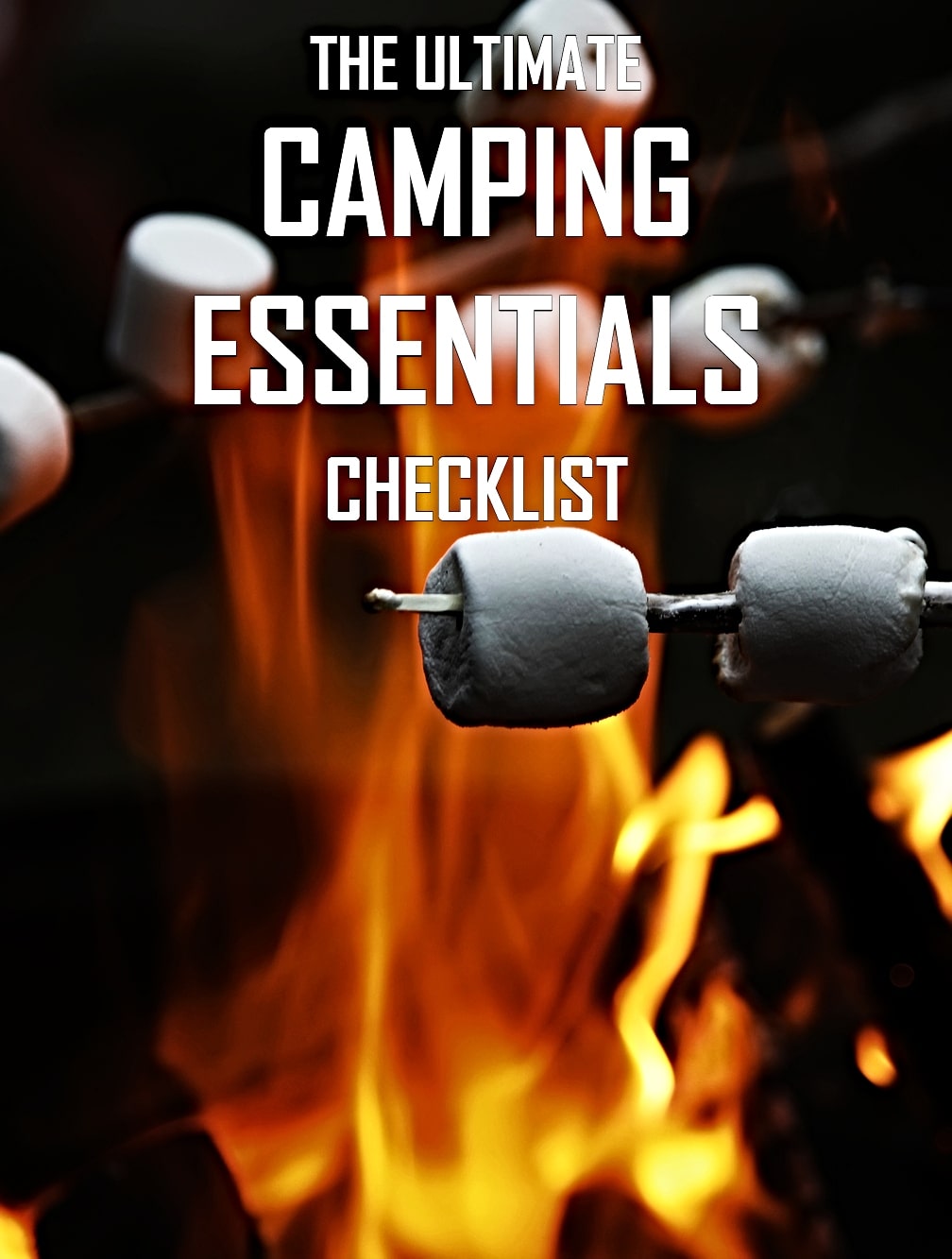
Want a free camping essentials checklist?
Click here to instantly download this Complete Checklist PDF. No purchase necessary.A Brief History Of Tents
A shelter is necessary for survival.
Our human ancestors sought shelter in forests and caves.
And eventually in huts, homes, and tents.
In fact, portable, packable shelters were extensively used by nomadic cultures throughout history.
The very first recorded ruins of tents were discovered in Russia.
Hunter-gatherers of this region used mammoth hides to create warm, wind-resistant shelters.
In this way, they protected themselves from the intense Siberian weather.
Later in history, teepees and yurts became popular.
They enabled people to set up camps to hunt and gather until resources became scarce and they needed to move on.
Mobile sheltering was a lifestyle for Mongolians and Native Americans.
Yurts are still a trendy design today.
For example:
You can find them in use throughout the Rocky Mountains.
The Romans were also big into tents.
Not because they moved their civilization from place to place (after all, they built Rome).
But their armies conquered most of Europe, Africa, and the Middle East.
So they needed portable transportation.
They used tents everywhere.
Big, little, fancy, and whatever kind of old-school tent you can imagine.
Most of their tents were fashioned from calf or goat skins.
In fact, tents have been an essential survival tool for every single war since ancient times.
The French Revolution, the American Revolution, the American Civil War, WWI, WWII, and beyond.
Tents are such a useful mechanism for portable shelter they’ll likely be popular well into the future.
We’ve come a long way after thousands of years of using and refining tent technology.
And a winter tent is a perfect example: durable, warm, water-resistant, and windproof.
The bottom line is:
Tents have come a long way since the days of hunkering down under mammoth hide.
3 Makeshift Winter Survival Shelters
If you get stuck outside in winter without a cold weather tent to take shelter inside of, you have a problem.
One that threatens your life, in fact.
But there are lots of ways to improvise in such a situation.
1. Build An Igloo
Tried and tested, the igloo is one of the best cold weather shelters in history.
Carve a bunch of bricks of snow and start stacking.
The tough part about building an igloo is that it takes a long time.
If you know you’ll be stranded outside for the night and have all day to prepare, go for an igloo.
The snow and ice walls work very well as insulation against harsh temperatures and winds.
Here’s a comprehensive video on igloo building:
↓ Building An Igloo
2. Dig a Snow Cave
Like an igloo, this concept uses snow as an insulator to keep you warm.
Snow caves are nice because they are faster to dig out and don’t have to be big.
Just large enough for you to crawl inside, curl up, and suffer through the harsh night.
Snow caves have saved countless lives over the years.
So if you ever need a quick, warm shelter in a pinch, start digging.
You scoop out enough snow to fit inside and then jimmy-rig a door.
Using a large snowball, a chunk of ice, a winter jacket, a rain jacket, a piece of plywood, etc., works very well.
The trick with the door is to make it as airtight as possible.
Otherwise, all the heat you build up inside escapes, and you freeze to death.
But be careful; making your snow cave too airtight can result in suffocation.
Find that balance…
Here’s a time-lapse video of an elaborate snow cave being built:
↓ How To Build A Snow Cave In Three Minutes
3. Insulate a Summer Tent With Snow
There have been times I’ve been backpacking in the spring, confident it would stay warm and sunny, only to get caught in a freak blizzard.
What can you do?
If you’re carrying a tent (even if it is not a cold-weather tent), you can add insulation – as long as there’s snow.
When you pack a couple of inches of snow onto the outside of your tent, you increase that tent’s ability to hold heat.
Unfortunately, if the snow melts and your tent isn’t waterproof, chances are you’re getting soaked.
But it’s not all that cold if the snow is melting.
Yay! You survived.
Final Thoughts
Hypothermia is a deadly killer – responsible for thousands of deaths a year.
Sadly, that fact can get in the way of outdoor activities during the winter.
But that doesn’t mean you must let it stop you from enjoying the outdoors!
You only need to make sure you’re prepared.
And the first step towards preparing for winter camping/survival is to get your hands on a cold weather tent.
Yes, everyone is going to need something different.
But I assure you, there’s a four-season tent with your name on it.
But be careful, and research before you buy – not all tents are created equal.
Do your research and know your needs.
Buying a tent is like owning a portable hunting lodge, cross-country skiing yurt, or warming hut.
If you consider yourself self-reliant and ready for any situation, you need a high-quality winter tent.
Why Trust Skilled Survival...
Go here now to review a full breakdown of:
- Who We Are
- Our Credentials
- Our Mission
- & Product Recommendations...
Here are a few highlights of our teams credentials & certifications:
- Certified Member of a Mountain Search & Rescue Organization
- Plant Emergency & Safety Leader for a Major Food Manufacturer
- Member of the 10TH Mountain Division Hut Association
- Certifications: Avalanche 1, WFR, CPR
- Official Gear Tester for Numerous Outdoor Gear Companies
- Countless Multiday Backpacking trips into Remote Wilderness
- Bachelor's Degree In Mechanical Engineering
- Bachelor's Degree In Civil Engineering
- Bachelor's Degree In Biomedical Engineering
"It takes 20 years to build a reputation and five minutes to ruin it." - Warren Buffett
We're fully aware that trust is NOT something you GET but is EARNED.
And we'll continue to earn YOUR trust through our forthright and honest approach with each new Blog Post, Guide & Product we create...
Will Brendza

P.s. Do You Live In A 'Danger Zone' County?
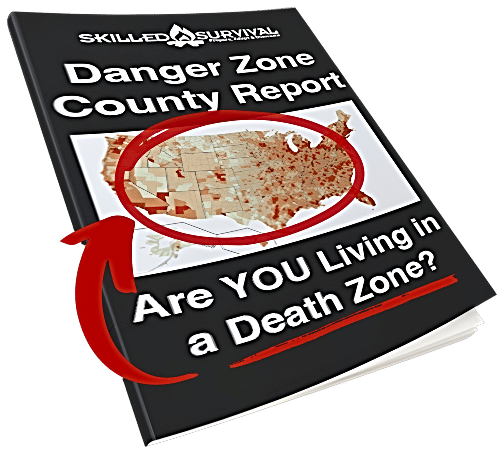
Find out now using my Danger Zone County List & Special Report it’s absolutely FREE.
In minutes you’ll know EXACTLY where you stand and if you should be worried or not..
So click here to get my FREE Danger Zone County List & Report…

Recommended Reading
LifeStraw Review: An Expert Puts It To The Ultimate Test
LifeStraw Review - with no moving parts, chemical additions, or batteries, it provides a lightweight, compact filter to treat up to 4000L...
Best Survival Bow: 16 Surprising Reasons YOU Should Get One
A survival bow is one of the most underappreciated weapons I think EVERYONE should own. Here are 16 reasons why YOU should get one today.
Best Survival Hatchets: Tough Enough To Outlast The Wild
Not all hatchets are created equal. A quality survival hatchet can do tasks even a survival knife cannot. Here's the one I carry in my pack.
Best Survival Radios: Why You Must Secure One (before SHTF)
Be the ONE who knows what the hell is going on after SHTF. Here's how to set yourself up with a reliable survival radio in a future disaster.
Best EDC Flashlights: Small, Compact But Still Super Bright
The best edc flashlights are durable, bright, compact and worth carrying! In this guide, we review the best one to make your search easy.
Minimalist Camping: How To Avoid The Most Costly Mistakes
Minimalist camping is a great way to practice wilderness survival. Here's a short list of the limited items to take on your next camping trip
